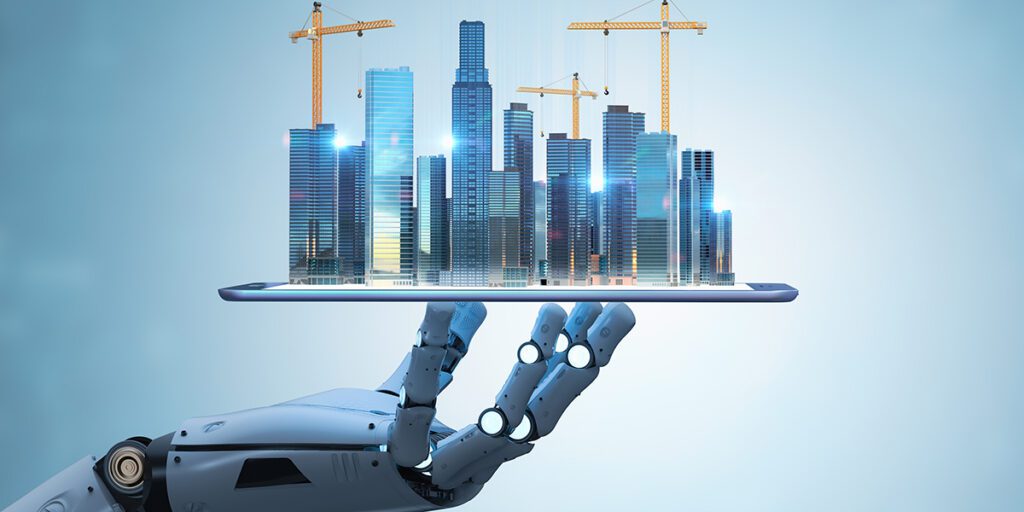
In today’s digital era, the combination of innovative technologies is transforming the construction and architecture industry. Two of the most revolutionary tools are BIM (Building Information Modeling) and artificial intelligence (AI). While BIM has been a growing standard for efficient project management, the integration of artificial intelligence opens up new possibilities that few industry blogs are exploring in depth. In this article we will discuss what BIM is, how it integrates with AI, the types of artificial intelligence applied and the benefits of this merger, especially in automating tasks within workflows.
Contenido
What is BIM and how does it integrate with AI?
BIM, or Building Information Modeling, is a methodology that enables the creation and digital management of the physical and functional information of a construction project. It is based on intelligent 3D models that store detailed data to facilitate project coordination, planning and monitoring. This technology improves collaboration between teams and reduces errors, cost overruns and delays.
The integration of BIM with artificial intelligence represents a qualitative leap in project management. AI brings machine learning capabilities, predictive analytics and big data processing, which enhances BIM in different areas.
The integration of BIM with artificial intelligence represents a quantum leap in project management. AI brings capabilities such as machine learning, predictive analytics and big data processing, empowering BIM in different areas such as design, planning and maintenance. Currently, platforms such as Autodesk BIM 360 already incorporate predictive analytics functions using AI for risk management, while tools such as Revit allow the use of plugins with AI-assisted design optimization algorithms. Likewise, solutions such as Spacemaker (now integrated into Autodesk Forma) use AI to generate optimized urban design proposals based on multiple variables.
Types of AI applied to BIM
Among the types of artificial intelligence that are applied in conjunction with BIM are:
- Machine Learning: Allows systems to learn from historical data to foresee future problems or needs in a project, such as potential structural failures or budget variances.
- Computer vision: Used to process images and videos, it facilitates the automatic inspection of construction sites, detecting anomalies or monitoring construction progress without human intervention.
- Natural Language Processing (NLP): Facilitates interaction with BIM systems through voice or text commands, improving accessibility and speed in information management.
- Robotics and automation: Although more related to physical execution, AI makes it possible to control robots that perform repetitive tasks based on data generated by BIM models.
Although traditionally more associated with physical execution, these technologies are increasingly linked to the BIM environment thanks to artificial intelligence. In the on-site execution phase, AI makes it possible to control robots performing repetitive tasks (such as drilling, material placement or 3D printing) based on accurate data extracted from BIM models, which improves accuracy and reduces errors on the construction site.
This combination of AI and BIM enables smarter workflows, where machines not only store information, but also interpret it and anticipate needs, allowing for proactive management.
Benefits of incorporating AI in BIM: task automation and more
Integrating artificial intelligence into BIM processes brings multiple advantages, among which task automation stands out as a decisive factor for efficiency.
Automation of repetitive tasks
Many activities within a BIM project, such as updating models, verifying data or generating reports, are often tedious and consume valuable time. AI can automate these tasks, freeing the team to focus on strategic or creative activities. Having a service professional BIM consulting allows to adapt these automations to the specific needs of each project and to guarantee optimal results.
For example, using machine learning algorithms, the system can identify inconsistencies in the model and automatically correct them or generate alerts for technicians to intervene before errors propagate.
For example, using machine learning algorithms, the system can identify inconsistencies in the model and automatically correct them or generate alerts for technicians to intervene before errors propagate. Tools such as Verity use artificial intelligence to perform automatic quality and coordination checks on BIM models, while Navisworks, with its advanced capabilities and AI-based plug-ins, facilitates interference detection and conflict management during project planning and execution.
Improved accuracy and error reduction
Artificial intelligence analyzes large amounts of data and patterns to detect deviations or potential failures before they occur. This increases accuracy in design and construction, avoiding costly rework and delays.
Optimization of time and resources
By anticipating problems and automating processes, projects can be completed faster and with more efficient use of resources. This translates into cost savings and increased customer satisfaction.
Facilitates data-driven decision making
AI provides predictive analytics and simulation models that allow different scenarios to be evaluated before changes are made, helping decision-makers make informed and confident decisions.
Innovation and competitiveness
Companies that adopt BIM with AI position themselves at the forefront of the industry, improving their ability to tackle complex projects and adapt to a market in constant technological evolution.
Conclusion
The impact of artificial intelligence on BIM workflows is undeniable. The synergy between these technologies is revolutionizing the way construction projects are planned, managed and executed, bringing automation, accuracy and efficiency. While still a growing field, early adoption of these tools can be the key to gaining a significant competitive advantage.
If you want to keep your company at the forefront of technology, it is essential to understand what BIM is, the types of AI that can be integrated and the benefits they bring, especially in task automation. Without a doubt, the future of the industry is being built today with intelligence and digital collaboration.
At 3D Global Consulting we help you to digitize and optimize your processes with customized solutions such as BIM modeling, Scan to BIM and BIM coordination.
Contact us and take the next step towards smarter and more efficient construction.
